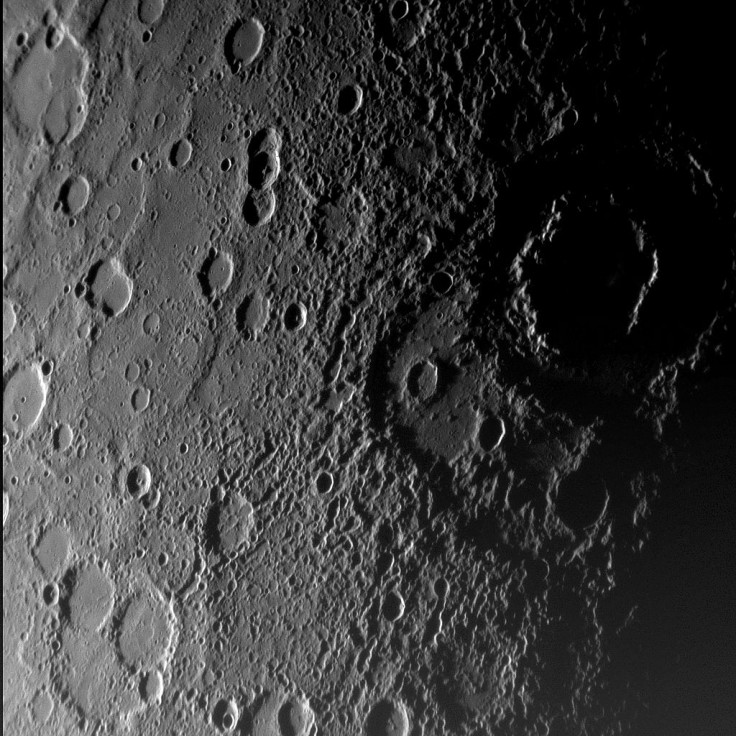NASA Photo Shows 'Ancient Alien Buildings' On Planet Mercury

An infamous alien theorist and UFOlogist made some outrageous and exciting claims recently about finding life outside of Earth.
According to Scott Waring, a UFOlogist who runs the website ETDatabase.com, he discovered what looks like ancient alien structures on the surface of Mercury. In a post, Waring said that he was browsing through some images on Wikipedia when he stumbled on an image of Mercury that got his attention.
“I was searching through some photos on Wikipedia and found some interesting buildings in a Mercury photo. There are dozens of craters in the one photo and over half have something at its center that look like buildings,” Waring said in a video.
The UFOlogist pointed out that he is positive that the structures are alien and artificial in nature because of its “design.”
“Now we don't know what structure types that aliens would design their buildings to look like, but I assume they are the kinds of objects that stand out,” he said.
The “structure” can be found in the Caloris Planitia region. The buildings, according to Waring, can be found inside some of the craters while some of the “buildings” are quite obvious because of the layout. The structures are either laid out in perfect L shape or in perfect rectangular placements.
Aside from Mercury, Waring also claimed that there are similar alien structures on the surface of the Earth’s moon. The infamous alien theorist said that he saw old buildings and abandoned landing strips with spaceships, on the surface of the Moon via a photo from the NASA Moon Index.
He also claimed that structures look silver on NASA photos and that most of the buildings look very old. The buildings are silver, with white reflective windows that remained undamaged because of space vacuum.
Due to this, he believes that the buildings can be reused by private space firms like Blue Origins or SpaceX as a hub for space tourists. Waring claimed that the buildings and landing strips are part of a large Lunar City that has been abandoned by an advanced alien race and that the city can be seen via the Google Moon Map.
© Copyright IBTimes 2025. All rights reserved.





















